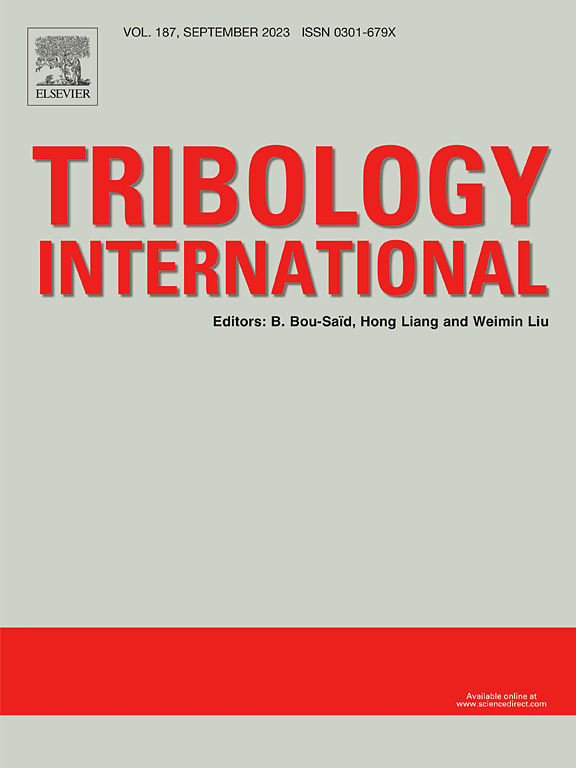Frictional anisotropy of ant legs and related inspired 3D-printed textured surfaces with self-locomotion on ultrasound vibrating substrates
IF 6.1
1区 工程技术
Q1 ENGINEERING, MECHANICAL
引用次数: 0
Abstract
Micro-spike textures in ant’s leg were investigated using Atomic Force Microscopy and frictional anisotropy was explored. Bio-inspired textured surfaces were 3D-printed with different material properties and orientation. Fundamental tribological test was carried out to evaluate static and dynamic frictional behavior of printed textures. Results showed frictional anisotropy; forward sliding friction was lower compared with backward direction, similar to ant’s leg. Uni-directional driving speed was evaluated under ultrasonic vibration. Ant and all textured samples showed driving capability. 3D-printed sample with a maximum speed of ∼165 mm/s was the stiffer one (Vero-Black) with optimum orientation (65°). Texture sample and plate contact interface was analyzed for driving mechanism using high-speed camera. Material properties, structural mechanics, and friction significantly affect locomotive speed.
求助全文
约1分钟内获得全文
求助全文
来源期刊

Tribology International
工程技术-工程:机械
CiteScore
10.10
自引率
16.10%
发文量
627
审稿时长
35 days
期刊介绍:
Tribology is the science of rubbing surfaces and contributes to every facet of our everyday life, from live cell friction to engine lubrication and seismology. As such tribology is truly multidisciplinary and this extraordinary breadth of scientific interest is reflected in the scope of Tribology International.
Tribology International seeks to publish original research papers of the highest scientific quality to provide an archival resource for scientists from all backgrounds. Written contributions are invited reporting experimental and modelling studies both in established areas of tribology and emerging fields. Scientific topics include the physics or chemistry of tribo-surfaces, bio-tribology, surface engineering and materials, contact mechanics, nano-tribology, lubricants and hydrodynamic lubrication.
 求助内容:
求助内容: 应助结果提醒方式:
应助结果提醒方式:


